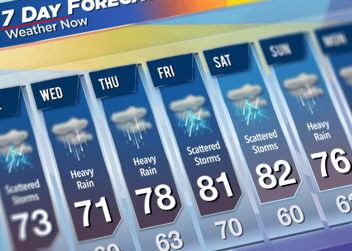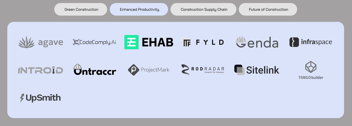I was invited to speak at the All-Party Parliamentary Group Evidence Meeting on the 19th of October. The session brought together some pre-eminent voices from the blockchain space to bring their perspectives on how blockchain is being or can be utilised to solve sustainability, global warming, renewable energy, greenhouse gas concentrations, greenhouse gas emissions and climate change issues as a whole. It was also possible to bring perspectives that showed that it was in fact doing more harm than good in the face of climate change.
Some of the suggested topic areas were:
- Can Blockchain ensure sustainability in energy use and help mitigating climate change, or is it causing a sustainability crisis?
- Can Blockchain help to solve the climate change crises and more efficient use of natural resources instead of helping the global temperature rise? (Land, oceans, air)
- How can data mining on blockchains become sustainable or ‘green’? (e.g., ‘green data’ where heat from server parks and mining fuel smarts grids)
- What are other sustainability issues associated with Blockchains? (e.g., carbon emission trade using blockchain, sea level rise as a byproduct of it all...)
https://www.biginnovationcentre.com/event/blockchain-use-cases-state-of-art-industry-trends-and-blockchain-forecast/
Some of other speakers were:
Alastair Marke, Director General of the Blockchain & Climate institute
Prof. Yu Xiong, Director of the Surrey Academy for Blockchain and Metaverse Applications
Priya Guiliani, EMEA Director of the Government Blockchain Association
Jordan Murkin, Technical Lead at the R&D arm of EDF Energy UK
Davif Pugh-Jones, CMO at Cudos
TALK:
I’m Josh Graham, the founder of EHAB. A tech company using advanced analytics, distributed ledger technology and parametric insurance to reduce weather risk in the construction sector and create climate resilience for our infrastructure taking into account factors like the global average temperature and how carbon emissions and methane emissions may impact it all long term.
- Weather has always been a problem in construction. 45% of projects are delayed by the weather. On average these delays can result in a 21% increase in the programme. All told, about 9.5% of the output of the UK construction industry is a cost associated with the weather.
- As we all know the climate crisis is increasing extreme weather across the globe, with global temperatures fluctuating in unanticipated ways and the increase of carbon dioxide making it difficult for the earth to cool off. In the UK, rainfall is becoming more violent. Six of the ten wettest years have occurred since 1998. This increases the likelihood of severe impact on the project. It also increases the likelihood of a contractual event, called a compensation event.
- Today, written into most construction contract is a clause which states that if the weather is uncharacteristically extreme then the risk will be shared between client and contractor. For a number of reasons though contracts in construction do an ineffective job at sharing the risk. There can be disputes and disagreements, costs may not be recouped, fines could be paid and a host of other potential disruption. In the end the clauses can often fail in their purpose of fairly sharing risk, and generate extra cost for absolutely no gain.
- This situation is costly and annoying today, but will become untenable as the increasingly extreme reality of climate change continues to warp weather impact in the industry. Left as it is, our resilience as an industry and a nation will decrease.
- We must be proactive in evolving contracts, not reactive.
- We spent 2020 working with BAM Nuttall, Clyde & Co, Ferrovial UK, The Connected Placed Catapult and Digital Catapult on an innovate UK grant.
- This saw us collectively develop the first smart contract use case for construction, applicable in many other sectors.
- The solution leverages micro weather stations and other data sources which collect trusted weather data. This data automatically triggers a smart contract based on the weather actually happening in a location.
- Each party to the contract hosts a Distributed Ledger Node on their computer which runs the smart contract.
- The smart contract contains triggers or rules which dictate at what threshold a compensation event should trigger. This can be customised to suit the project. For example, taking inspiration from an existing standard form of contract, you could use a threshold based on the preceding ten years of weather data, stating, the threshold for rainfall in a month will not exceed statistically the worst case scenario experienced in the last 10 years.
- For our test pilots this is what we did. The smart contract upon initialisation generates the thresholds based on data for the exact location of the project, rather than the nearest met office station - the standard in the industry today. These numbers are displayed in the system and are the foundation of the smart contract.
- As the project happens weather data is collected and monitored via the DLT, if the thresholds are met this then triggers a compensation event. The client's node will automatically accept the notice that an event has occurred. The data for the event will be shared with all parties and they can proceed swiftly to the process of agreeing an extension of time, or additional money.
- Traditionally this process could take up to 8 weeks, whilst they waited for data from the met office and the prepared evidence for a claim. It was also uncertain if the client would in fact agree it is an event given the large amount of uncertainty around how these clauses should be administered.
- We trialled this tool on 5 projects and showed this software would save time and improve the contract management process. The compensation event triggered within seconds of the threshold being broken, rather than taking up to 8 weeks. The data was shared immediately with both parties and they could start discussions.
- The next step, to fully automating this aspect of the contract, is to agree on a pricing structure. Today every impact is assessed by those working on the project. Yet there is no explanation for how the assessment should be made. This leaves a huge amount of uncertainty in the contract. Key decisions are being given to project managers and their counterparts who are the ones directly involved in the work and now assessing the impact on it. Putting that kind of pressure on people is not useful when they are already trying to resolve the impact of the weather event especially when there are sensitive commercial elements on the line.
- Taking this cost and time extension decision away from people and putting it into the smart contract will foster better working relationships and ultimately provide fairer decisions in the long run. One technique could be to include further rules in the smart contract dictating values for activities, dependencies and other variables. Another could be to create a satisfactory model which can generate a number based on the event, its severity and other datasets. More complicated but perhaps closer to reality.
- Ultimately climate resilience is reliant on quick and fair action to get the project back on track efficiently. With automated payments being made, based on live weather data and the activities actually happening on site we can start to share risk more appropriately. This will also save cost and reduce unnecessary admin around the weather. Having this kind of safety net can help smooth over the inevitable bumps caused by more extreme weather.
- Smart contracts can enable contractors and clients to respond to changing/deteriorating environmental factors with ease. This supports keeping projects, often vital infrastructure, like railways or wind farms, from slipping behind schedule.
- We are deploying the same technology within insurance, creating automatically triggering policies that protect the entirety of the project from extreme delay and can cap the risk being taken on by the government or large developers.
- Blockchain and DLT are already developed enough to satisfy the technical requirements of this problem. However the industry and governmental orgs we have worked with need to understand the benefits and make changes to their practices, assisted by lawyers.
Some extra points I’m keen to get across here and that I’ll elaborate on in another article:
- This smart contract layer can help close lots of loopholes which create uncertainty in the way weather risk as a byproduct of the global temperature, in a contract is administered and the knock on effects of the programme.
- The benefits of automation and modelled risk rules in a smart contract, outweigh the perceived loss of control as a downside.
- Putting these practices in place creates a much fairer and more effective risk sharing environment given that the rules through which weather risks are assessed will be known to all tenderers and they could use the EHAB platform to plan exactly up to these measures.
Some points that were made by the other speakers that I thin are particularly interesting:
- There is an enormous misconception that “blockchain” has a massive carbon footprint, that it may be as bad as burning fossil fuels, affects the earth's average temperature negatively and is completely unsustainable.
- When judged against other systems they too have high power outputs. Therefore, you should always consider the costs and benefits of a system before judging if it is in fact “too high” of a cost.
- Bitcoin and its proof of work mechanism for maintaining the security of the system is the root of the extensive emissions. Proof of work replies on computers competing to solve incredibly complex maths problems to maintain the integrity of the blockchain. There are several other methods that would achieve the same results for much lower power usages. Such as proof of stake mechanisms.
- The majority of the emerging real life use cases have traceability at their core. They reply on machine created data that can then prove the origin of some thing, energy or example. This is one use case where there really is no other better technology that could fit the bill to solve that problem.



